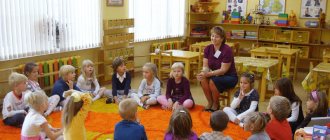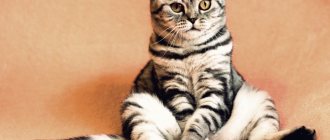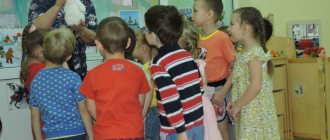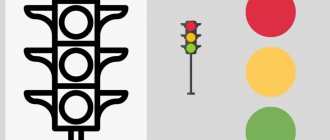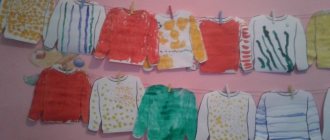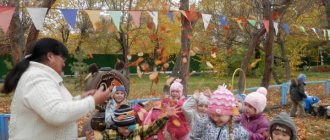Physical exercise “Cheerful bun”
Natalya Perepechko
Fizminutka “Merry Bun”
Educational activities require a lot of nervous tension from children. During direct educational activities, children of any age experience significant stress on their organs of vision, hearing, muscles of the hands and the entire body, which are often in a static position for a long time. External manifestations of fatigue are loss of interest and attention, weakening of memory and decreased performance.
Physical education minutes are a necessary component of any direct educational activity.
Physical education minutes are spent in class as a necessary short-term rest.
I offer you a physical education lesson that you can use in class.
Explanatory note for the physical exercise " Merry Bun "
Slide 1: information about the author
Slide 2: “One, two, it costs a rocket”
(children stand straight, legs together, arms raised up, place palms of hands together.)
Slide 3: “Three, four plane”
(children stand straight, legs in a narrow path, arms to the side)
Slides 4 to 6 perform actions according to the text.
Attached files:
Physical exercise for children “One, two, three, four, five” to relieve muscle tension Physical exercise for young children. "One two three four five". Goal: To help relieve muscle tension and develop coordination.
A physical exercise with elements of logorhythmics is one of the most important health-saving technologies used in our school, compiled by me personally, in the compilation of which I tried.
Consultation “Physical training is the most important element of the educational process” Currently, studying at school is a serious burden for a child. It has long been proven that the traditional structure of a lesson and monotonous teaching.
Photo report “Fun Alphabet” In the senior group, many students already know the letters and can read. That's why we decided to make our own fun alphabet. Will come in handy before. Photo report “Fun Garden” Growing plants is of great importance in the cognitive development of children, instilling an ecological culture, and correct behavior in nature. Photo report “Happy Saturday!” Consultation for parents “Happy Saturday!” On the eve of the Spring and Labor Day, May 1, I would like to tell parents how to attract their own. Our cheerful vegetable garden In April, among the preschool institutions of our city, a competition “Vegetable Garden on the Window” was held, in which our group also took an active part. Non-traditional drawing technique for children 2–3 years old “Kolobok-Kolobok” Objectives: to develop children’s interest in visual arts; develop children's imagination and creativity; develop small
Source
Summary of an integrated lesson in the second junior group “To help the bun”
Educator:
Guys, who is that under the bush?
Children:
Bear.
Educator:
Brown bear, Brown bear,
Why are you so gloomy?
Educator:
Guys, the bear asks us to help him collect the pine cones that he lost.
Educator:
Guys, look how many cones there are here?
( A lot of).
Are the cones all the same?
How many big bumps? (One)
, how many small cones?
( A lot of
). Let's all collect the cones together and put them in a basket.
Educator:
Guys, we helped the bear, but it’s time for us to move on. Look who's growling near the stump.
Children:
Wolf.
Educator:
What kind of wolf is there in fairy tales?
Children:
Angry, scary, bad, rude.
Educator:
Guys, the wolf is rude because he doesn’t know polite words. I suggest teaching the wolf polite words. Do you know polite words?
Children:
Yes.
Educator:
When you come to kindergarten, what do we say?
Children:
Hello, good morning.
Educator:
And when you leave kindergarten, what do you say?
Children:
Goodbye.
Educator:
When you are treated to sweets, what should you say?
Children:
Thank you.
Educator:
And when do you want to play with someone else's toy?
Children:
Please let me play.
Educator:
What if you offended a friend?
Children:
I'm sorry, please, forgive me, please.
Educator:
Well done, the wolf now also knows polite words, now he won’t be so angry. And so that he becomes even kinder, we will play an unusual game with water.
Breathing exercise “Bubbles”
(In front of each child on the table there is a glass filled with water and a cocktail tube. Children inhale through their nose and exhale through their mouth through the tube so that bubbles appear)
.
Educator:
Guys, you enjoyed playing. And the wolf liked it too, he’s not so angry anymore. But you and I need to move on. Look, there is a clearing ahead, and who is sitting there?
Children
: Bunny.
Educator:
Is the bunny also kind of sad? Guys, his pictures from his favorite book of fairy tales are torn. We need help collecting the torn pages.
Didactic game “Collect a fairy tale”
(children assemble pictures depicting fairy tales from parts into a whole and name the fairy tale
).
Educator:
The bunny tells us thank you for your help, but we need to move on.
Educator:
We walked, we walked, and we came to the house (
Approaching the house
).
Educator:
Here is Koloboktvoy's house. Don't run away from home anymore.
Educator:
Guys, did Kolobok do the right thing when he left home?
Children:
No.
Educator:
Can you run away from adults? Walk alone?
Children:
No.
Educator:
Should friends come to each other's aid?
Children:
Yes.
Educator:
Well done guys, you are real friends, you helped Kolobok get home.
They did a good job. Kolobok thanks us and promises not to run away from home anymore and gives us his little portraits ( he gives us reflectors in the form of emoticons
).
Integrated lesson “Kolobok - ruddy side”
Natalya Kovryzhkina
Integrated lesson “Kolobok - ruddy side”
Continue to teach children to listen to a fairy tale, enrich their vocabulary with adjectives: round, rosy, hot (bun, big, shaggy (bear, cunning, red (fox, grey), long ears (bunny).
Strengthen the ability to color a bun.
Material:
pictures with the fairy tale “Kolobok”, ready-made contours of the kolobok for coloring, brush, yellow gouache, supply for the brush, napkin.
Progress of the lesson:
Educator: guys, look at the board and tell me what fairy tale is shown in the pictures? (Children's response)
- That's right, this fairy tale “Kolobok”. I will now remind you of this fairy tale. (The teacher tells a fairy tale using pictures)
The teacher asks questions about the fairy tale, the children answer. Afterwards, they recite the fairy tale again with the children.
Physical exercise: KOLOBOK
Kolobok, kolobok, warm and rosy. (tilts to the right, left)
Jump and jump, jump and jump, our friend has started, (jumping, running in place)
He turned right, then he turned left, (turns right and left)
Then it spun with a leaf (rotate 360 degrees)
then he became friends with the little squirrel. (squat)
Rolled along the path (running in a group)
and fell into my palms. (children run up to the teacher)
Educator: Now guys, look who came to visit us? This is grandma.
Grandmother: I baked a bun, this is what it is (shows with hands). What bun?
Children: round, rosy, hot.
Grandmother: I put it on the window to cool. Oh, I look, he rolled and ran away from us. So fast, tomboy. We ran to catch up with him. We didn't catch up. My grandfather wanted to draw a portrait as a keepsake.
- Wow, I'm tired. What a quick guy. Guys, please help me draw a portrait of a kolobok.
Educator: Well, should we draw a portrait of a kolobok for grandma? (children's answer)
Finger gymnastics “Kolobok”
I, kolobok, kolobok, (roll an imaginary kolobok in their hands)
Scrape along the bottom of the barrel, (scrape the left palm with the right palm)
Sweep around the barn (simulate sweeping the floor)
Meshen with sour cream (make circular movements with the right hand)
Sazhen in the stove (show both arms extended forward)
It's cold at the window. (blow on palms)
I left my grandfather (imitation of walking with thumb and middle fingers)
I played with the kids and got tired. (claps hands)
Educator: Tell me guys, what color is the bun? (children's answer). Look, do you have yellow paint on your table? (children show yellow paint). Let's take a brush in our hands, dip it in yellow paint and start painting the bun. Look how I will do it. (show on the board)
Children begin coloring, the teacher helps the children in coloring. The boys give the finished portraits to their grandmother.
Grandmother thanks for the beautiful portraits and offers to play
didactic game “Feed the bun”
— Guys, the bun needs to be fed: beans are vitamins, you need to put them in the bun’s mouth one at a time.
Children take turns completing the task: placing beans in the cut hole - the mouth. Speak the poem:
Eat, eat Kolobok,
So that I can roll on!
- We fed the bun, he became happier. Thanks you for the treat and says “thank you.” How should you respond to this word?
- That's right, “please!” Let's each say a polite reciprocal word to the kolobok.
Children take turns pronouncing the word “please” correctly.
Grandmother: Thank you guys for the portraits, for playing the game with me, but it’s time for me to go home, where my grandfather is waiting for me and I will show him the portraits of the kolobok.
Educator: Let's say goodbye to grandma, she needs to hurry home.
-What word do we say when we say goodbye?
- That's right, “goodbye!”
The children say goodbye to their grandmother one by one.
Integrated binary lesson in the middle group “Kolobok in reverse” Authors: Nikiforova Yana Aleksandrovna, teacher 1st quarter. cat., Mishukova Snezhana Vasilievna, music director 1st quarter. cat. Goal: Develop.
Integrated lesson “Kolobok is looking for friends” in the senior group Summary of organized educational activities in the senior group KOLOBOK IS LOOKING FOR FRIENDS Educator: Marinenko N. F. MBDOU No. 19.
Integrated lesson in the junior group “Kolobok” Purpose: To teach children to actively participate in telling a fairy tale, to conduct role-playing dialogue; Objectives: 1. Educational Continue to teach children composition.
Integrated lesson in the first junior group No. 1 based on the RNS “Kolobok” Objectives: To consolidate children’s knowledge about forest animals (hare, wolf, bear, fox); To develop the ability to perform movements corresponding to the text;
“Kolobok is a ruddy side.” Abstract of the OOD on artistic and aesthetic development in the early age group Topic: “Kolobok - ruddy side.” Goal: to teach how to work with dough. Tasks: Practice rolling a ball between your palms in a circular motion;
Master class on sculpting “Kolobok-Ruddy Side” Master class on sculpting “Kolobok-Ruddy Side” Irina Lebedeva To make a Kolobok we will need: plasticine, stack. For work we will need:. Master class with step-by-step photos “Kolobok - ruddy side” Author: Larin Anton, 5 years old, middle group “Chamomile” MDOU VMR “Kindergarten No. 30 “Fairy Tale” Leader: Larina Alla Gennadievna, teacher.
Theatrical lesson for children of the first junior group “Kolobok - ruddy side” Theatrical lesson for children of the first junior group “Kolobok - ruddy side” Program content: to develop children’s ability with facial expressions.
Source
Integrated lesson “Kolobok - ruddy side”
Natalya Kovryzhkina
Integrated lesson “Kolobok - ruddy side”
Target:
Continue to teach children to listen to a fairy tale, enrich their vocabulary with adjectives: round, rosy, hot (bun, big, shaggy (bear, cunning, red (fox, grey), long ears (bunny).
Strengthen the ability to color a bun.
Material:
pictures with the fairy tale “Kolobok”, ready-made contours of the kolobok for coloring, brush, yellow gouache, supply for the brush, napkin.
Progress of the lesson:
Educator: guys, look at the board and tell me what fairy tale is shown in the pictures? (Children's response)
- That's right, this fairy tale “Kolobok”. I will now remind you of this fairy tale. (The teacher tells a fairy tale using pictures)
The teacher asks questions about the fairy tale, the children answer. Afterwards, they recite the fairy tale again with the children.
Physical exercise: KOLOBOK
Kolobok, kolobok, warm and rosy. (tilts to the right, left)
Jump and jump, jump and jump, our friend has started, (jumping, running in place)
He turned right, then he turned left, (turns right and left)
Then it spun with a leaf (rotate 360 degrees)
then he became friends with the little squirrel. (squat)
Rolled along the path (running in a group)
and fell into my palms. (children run up to the teacher)
Educator: Now guys, look who came to visit us? This is grandma.
Grandmother: I baked a bun, this is what it is (shows with hands). What bun?
Children: round, rosy, hot.
Grandmother: I put it on the window to cool. Oh, I look, he rolled and ran away from us. So fast, tomboy. We ran to catch up with him. We didn't catch up. My grandfather wanted to draw a portrait as a keepsake.
- Wow, I'm tired. What a quick guy. Guys, please help me draw a portrait of a kolobok.
Educator: Well, should we draw a portrait of a kolobok for grandma? (children's answer)
Finger gymnastics “Kolobok”
I, kolobok, kolobok, (roll an imaginary kolobok in their hands)
Scrape along the bottom of the barrel, (scrape the left palm with the right palm)
Sweep around the barn (simulate sweeping the floor)
Meshen with sour cream (make circular movements with the right hand)
Sazhen in the stove (show both arms extended forward)
It's cold at the window. (blow on palms)
I left my grandmother
I left my grandfather (imitation of walking with thumb and middle fingers)
I played with the kids and got tired. (claps hands)
Educator: Tell me guys, what color is the bun? (children's answer). Look, do you have yellow paint on your table? (children show yellow paint). Let's take a brush in our hands, dip it in yellow paint and start painting the bun. Look how I will do it. (show on the board)
Children begin coloring, the teacher helps the children in coloring. The boys give the finished portraits to their grandmother.
Grandmother thanks for the beautiful portraits and offers to play
didactic game “Feed the bun”
— Guys, the bun needs to be fed: beans are vitamins, you need to put them in the bun’s mouth one at a time.
Children take turns completing the task: placing beans in the cut hole - the mouth. Speak the poem:
Eat, eat Kolobok,
So that I can roll on!
- We fed the bun, he became happier. Thanks you for the treat and says “thank you.” How should you respond to this word?
- That's right, “please!” Let's each say a polite reciprocal word to the kolobok.
Children take turns pronouncing the word “please” correctly.
Grandmother: Thank you guys for the portraits, for playing the game with me, but it’s time for me to go home, where my grandfather is waiting for me and I will show him the portraits of the kolobok.
Educator: Let's say goodbye to grandma, she needs to hurry home.
-What word do we say when we say goodbye?
- That's right, “goodbye!”
The children say goodbye to their grandmother one by one.
